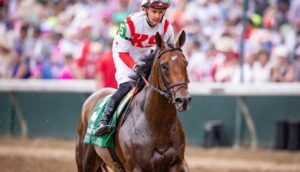
Turf betting, with its blend of strategy, intuition, and analysis, offers an exhilarating opportunity to engage with horse racing in a dynamic and rewarding way. For those seeking success on the turf, understanding the intricacies of handicapping and developing effective betting strategies is paramount. In this comprehensive guide, I’ll share my three fundamental bases of genius (geny) in turf betting, honed through years of experience and refinement. From deciphering form guides to maximizing value, these strategies will empower you to elevate your turf betting game to new heights.
The Power of Form Analysis
Form analysis lies at the heart of turf betting, serving as a cornerstone for assessing the performance potential of racehorses. By meticulously studying a horse’s past performances, trainers, jockeys, and track conditions, bettors can gain valuable insights into its current form and competitive prowess. Key factors to consider include recent race results, finishing positions, speed ratings, and any notable trends or patterns.
Delving deeper into form analysis involves scrutinizing various performance metrics and indicators to identify horses that are primed for success. This may involve evaluating factors such as class levels, distance preferences, track biases, and race pace dynamics. By synthesizing this information, bettors can make informed decisions and identify value opportunities that may be overlooked by the general betting public.
Embracing the Art of Handicapping
Handicapping is both an art and a science, requiring a keen eye for detail and an understanding of the nuanced factors that influence race outcomes. While form analysis provides a solid foundation, handicapping involves assessing the relative strengths and weaknesses of each horse in a given race field. This includes analyzing factors such as speed figures, weight assignments, post positions, and jockey tactics.
One effective handicapping strategy is to develop a systematic approach for assigning weight to different performance factors based on their predictive value. This may involve creating custom algorithms or using established handicapping methods such as the Beyer Speed Figures or the Thorograph system. By applying a disciplined approach to handicapping, bettors can identify overlays and underlays and capitalize on mispriced horses in the betting market.
Maximizing Value and Managing Risk
In turf betting, success is not solely determined by picking winners but by maximizing value and managing risk effectively. One key principle is to focus on identifying horses that offer favorable odds relative to their perceived chances of winning. This requires a nuanced understanding of betting markets and the ability to discern overlays (horses whose odds are higher than their true probability of winning) from underlays (horses whose odds are lower than their true probability of winning).
To maximize value, bettors can employ various betting strategies such as value betting, dutching, and hedging. Value betting involves wagering on horses whose odds are higher than their expected probability of winning, while dutching involves spreading bets across multiple horses to mitigate risk and optimize returns. Additionally, bettors can use hedging techniques to lock in profits or minimize losses by placing strategic bets before or during a race.
Leveraging Advanced Analytics and Technology
In the digital age, the proliferation of data analytics and technology has revolutionized turf betting, providing bettors with access to a wealth of information and tools to gain a competitive edge. Advanced analytics platforms and software programs offer sophisticated algorithms and predictive models that analyze vast datasets and identify betting opportunities with a high probability of success.
By leveraging advanced analytics and technology, bettors can harness the power of machine learning, data mining, and predictive modeling to uncover hidden patterns and trends in horse racing data. This may involve using predictive algorithms to forecast race outcomes, identifying profitable betting angles, or developing automated betting systems that execute trades based on predefined criteria. Additionally, technological innovations such as live streaming, mobile betting apps, and in-play wagering platforms offer bettors greater flexibility and convenience in placing their bets.
Developing a Bankroll Management Strategy
Successful turf betting requires not only skill and insight but also prudent bankroll management to protect against losses and preserve capital over the long term. A sound bankroll management strategy involves setting realistic goals, establishing betting limits, and allocating funds responsibly across different betting opportunities.
One common approach to bankroll management is the Kelly Criterion, which recommends wagering a percentage of your bankroll based on the perceived edge or advantage in a given bet. By sizing bets appropriately according to the expected value and risk of each wager, bettors can optimize their long-term returns and minimize the likelihood of ruin.
Conclusion:
Above all, responsible gambling is paramount to ensuring a safe and enjoyable betting experience for all participants. While the thrill of turf betting can be exhilarating, it’s essential to approach it with caution and moderation, recognizing the risks involved and prioritizing the well-being of oneself and others.




